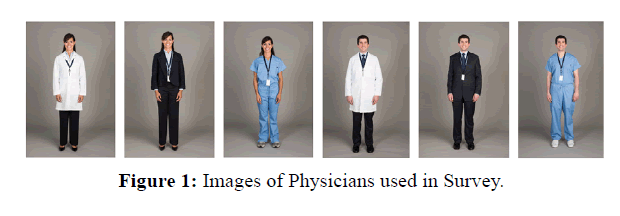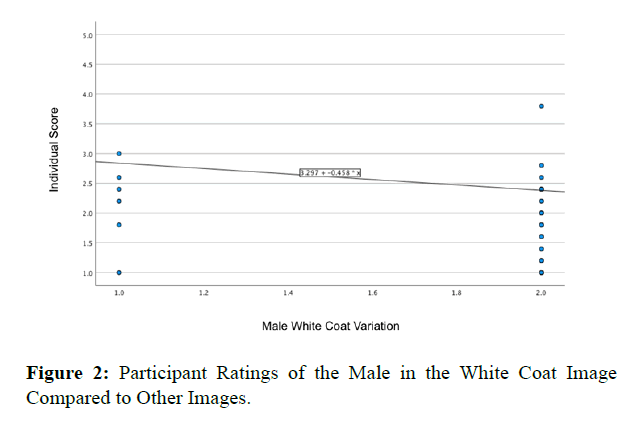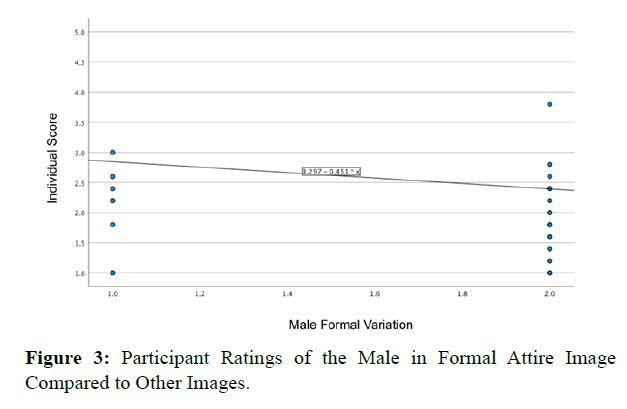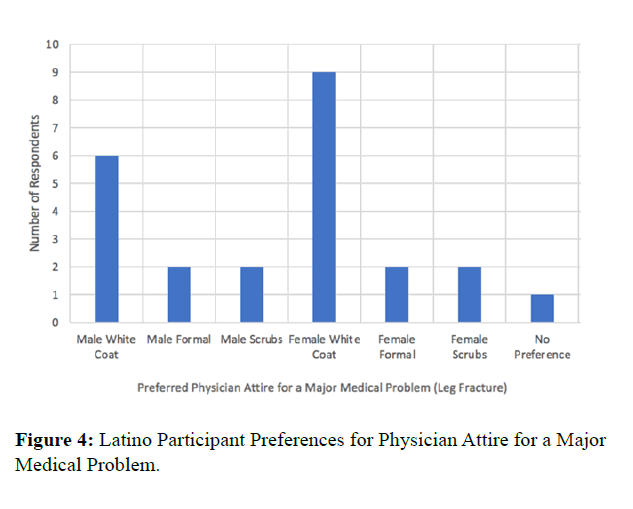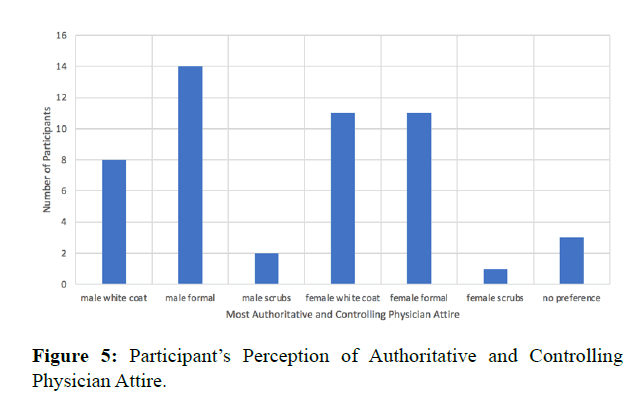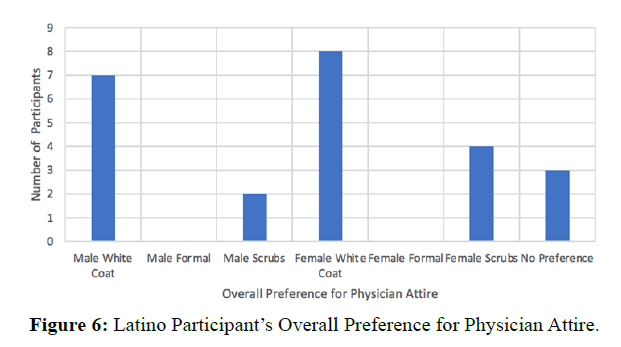Keywords
Patient-Physician Relationship; Latino patients; Community-based research
Introduction and Background
The success of doctors and healthcare workers heavily depends on their relationship with patients. In fact, the practice of medicine “hinges on the patient-physician relationship” [1]. In establishing this patient-centered care, doctors must earn the trust of patients in a way that patients feel comfortable sharing their symptoms. It is well established that higher levels of trust leads to higher patient satisfaction, and physicians influence this relationship with their appearance, particularly clothing [2]. The importance of how physicians dress has been emphasized since the early stages of the healthcare profession when Hippocrates declared that doctors should be “clean in person [and] well-dressed” [3].
Different personal, cultural, professional, and hygienic factors influence how physicians dress. For example, some doctors wear white coats to establish a more professional appearance, while others avoid wearing white coats to limit the effects of “White Coat Hypertension,” a phenomenon where the blood pressure of patients increases in medical settings [4]. Furthermore, the United Kingdom’s Department of Health has implemented a “Bare Below the Elbow” dress code that prohibits ties and any form of clothing beyond the elbows to avoid clothing-based bacterial transfers and contamination [5]. Clearly, physician attire holds numerous implications for the developing medical field and affects the practice of medicine.
A number of studies have confirmed the link between physician attire and the patient-physician relationship. In one study, 70% of the participants reported that physicians’ attire influences their confidence in their physician [6]. Other studies have found that physicians’ attire influences trust, confidence, and patient satisfaction levels across academic medical centers in the United States [1]. However, Hennessy et al. [7] found that there is no relationship between physicians’ attire and patient satisfaction or confidence, and Hueston and Carek [8] found that patients have no dominant preference for physician attire [7,8]. However, after learning those physicians’ ties and white coats may put them at risk of infection, over 40% of patients preferred physicians to wear just shirts and slacks [8]. Another study found that nearly 70% of patients still prefer that physicians wear white coats in light of the hygienic “Bare below the Elbows” policy [9]. Additionally, patient preference for physician attire varies depending on the age, race, and gender of the patient. Petrilli et al. [1] found that older patients prefer that physicians wear more formal attire, whereas younger adults preferred scrubs and white coats to formal attire overall.
Another issue associated with the physician attire is that their clothing, while giving them a professional appearance, simultaneously confers authority to them and their credentials as a doctor and could facilitate or complicate issues of patient care. The white coat may establish an unequal relationship between the patient and the doctor, when the goal should be a relationship of equality [10]. Furthermore, white coats can confer authority and medical expertise to people without medical credentials. For example, one man from Florida gave fake medical examinations and advice to his patients. A white coat, stethoscope and office fooled patients into believing his medical capabilities without looking into his medical education [11]. Clearly, the white coat confers medical authority, and the authority it confers must be treated with respect and caution.
It is indeed possible that medical clothing affects the patient-physician relationship, and there are three factors that could be used to evaluate this relationship: patient trust, confidence and satisfaction with their healthcare provider. Therefore, any study looking to evaluate the patient-physician relationship must identify and define these three factors. Pascoe [12] defines patient satisfaction as a health care recipient’s reaction to salient aspects of his or her experience. It measures how the patient perceived their experience with a medical professional, and it is an indicator of good healthcare. Patient trust, another “keystone” of the physician-patient relationship, increases the probability that a patient will adhere to the prescribed treatment. Pellegrini [13] defines patient trust as “assured reliance on the character, ability, strength or truth of someone” and “reliance on the physician and the physicians’ intent”. The last trait is patient confidence, and this measures patient knowledge, access to resources, involvement in decision-making and self-management [14]. Clearly, these factors are all important to studies that evaluate how physician attire affects the patient experience and physician-patient relationship.
It is important to examine physician attire because it may be one of the few changeable aspects that influences the patient-physician relationship and could be easily altered to improve patient satisfaction and ultimately health outcomes. This phenomenon has been explored in many different disciplines of medicine. As established, patient preferences for physician attire vary by numerous demographic and situational factors. However, previous studies of physician attire have focused on private hospitals that are difficult for lower income groups to access. Further, they have not worked with Latino Community in Minneapolis, Minnesota and South Bend, Indiana, and the preference for physician attire in these areas remains unstudied. Therefore, the purpose of this study is to understand how physician attire influences the physician-patient relationship between Latino patients and healthcare providers in Minnesota and Indiana.
Methods
This research project intended (s) to address the wide array of patient preferences for physician attire and the lack of research into how Latino patients perceive physicians based on their attire. This project planned to answer the research question: how does physician attire impact patient satisfaction, trust, and confidence in their healthcare providers in low-income clinics that primarily serve Latino patients? Furthermore, this study sought to answer what type of physician attire is preferred by Latino patients depending on the severity and context of the medical issue.
With the help of the research mentor, Dr. Maria Alexandrova of Notre Dame’s Eck Institute for Global Health, the primary investigator developed an online survey using Qualtrics XM to measure levels of patient trust, confidence and satisfaction based on a series of questions. The Qualtrics XM platform was used to gather quantitative data. Qualtrics XM was chosen because it was offered for free to students at Notre Dame. Furthermore, Notre Dame’s OIT office encouraged students to use Qualtrics XM because they offered IT support for Qualtrics XM, but not for other programs. The investigator also translated the survey into Spanish so that Spanish-speaking patients could better understand and answer the survey. The primary investigator used surveys from similar studies as a template after receiving permission from the authors of both studies [1,15]. He also used professional photos from previous surveys with the permission of the photography studio. After developing the survey, it was checked and approved for validity by both Dr. Alexandrova and Dr. Seth Berry, a Research Analyst at the University of Notre Dame who taught a course on survey design, and it was verified that the survey would measure the intended variables. In order to protect the privacy of the participants, the survey settings were modified so that they did not record any identifying information of the individual (IP address, email, etc.).
This figure shows the different variations of physician attire used in the survey. The same male and female models were used for all forms of attire so that individual attractiveness did not influence patients' responses. Differences in patient responses were due to the physician’s attire only (Figure 1).
Figure 1: Images of Physicians used in Survey.
When all the materials were gathered, the primary investigator contacted several low-income health organizations and organizations with large Latino populations in South Carolina, Indiana, and Minnesota to participate in the study including Volunteers in Medicine Clinic, Casa de Amistad, Notre Dame, Centro Tyrone Guzman, and Gerten’s. He got permission to conduct the survey from administrators at each location. Once permission was obtained, he submitted all of the appropriate documents and answered all of the questions in the IRB form. The IRB form was filled out and filed under the “exempt” research category with low risk. All potential risks were noted in the IRB in the appropriate section. The survey, background information, consent forms and permission from organizations were all attached to the IRB submission, and the IRB was approved on March 16th, 2020.
When the survey was completed and IRB granted permission for the research project, it was distributed to the participants at the local organizations in several ways in several different phases. There were noted differences in response rates based on the format of survey distribution and participation. The first phase of the project started with the Volunteers in Medicine Clinic in Hilton Head Island. Here, the link and scannable barcode to the survey were distributed to patients by Stan Stolarcyk, a hospital administrator, on pieces of paper. After distribution of the survey was completed, no responses were recorded on Qualtrics. Since there were no participants at this site, the organization was removed from the study. At Casa de Amistad, the link was distributed to the emails of the participants by Felix Marquez, an administrator of the organization. Participants clicked on the link and were taken to the survey. At the University of Notre Dame, the link was sent to a group chat for Latino students at Notre Dame by Carolina Moreno, a Latina student at Notre Dame. Participants were able to click on the link and participate in the survey. At Centro Tyrone Guzman, the program leaders including María Padilla and Sandra Reyes asked their clients if they wanted to participate. If they agreed to participate, their names and phone numbers were shared with the primary investigator. The primary investigator contacted each participant and set up an online meeting using the platform zoom. The investigator verbally dictated the questions to the respondents and shared his screen with the respondents so that they were able to see the images of the doctors and respond. At Gertens, the survey link and barcode were distributed to participants on pieces of paper.
The survey was grouped into four parts. In the first part, participants were shown one of 6 images: male white coat, male formal, male scrubs, female white coat, and femaleformal or female scrubs. Participants then responded to a series of questions below the images corresponding with their trust, confidence, and comfort with each physician. The responses were all given numbers so that a positive response corresponded with a low number, and a negative response corresponded with a high number in the analysis of the results, these scores were averaged to find a single score for each participant. In the second part of the survey, participants were shown all male variations of clothing or all female variations of clothing. They were then asked which variation they would prefer, if any, for individual medical situations (for example, a surgery, a minor medical issue, or a major medical issue). In the third part of the survey, all participants answered the same four questions about their thoughts on the importance of physician attire and how it affects their healthcare experience. The fourth part of the survey asked for demographic information (age, race, ethnicity, years of education, and frequency of doctor's visits).
The English copy of the survey had 36 respondents, and the Spanish copy of the survey had 19 responses for a total of 50 respondents. After collecting all the information, the results were analyzed with the help of Angela Chesler of Notre Dame’s Center for Social Science Research.
Results
The survey was verified to measure responses and answers the original research questions. First, how does physician attire affect the trust, confidence and satisfaction of Latino patients, and second, which type of physician attire is preferred in different medical situations. When the data collection component of the research project was complete, the results of the study were analyzed using tools from SSPS with the help of Dr. Maria Alexandrova and Angela Chesler, an employee of Notre Dame’s Center for Social Science Research (CSSR).
First, the investigators used basic formulas within SPSS to gather descriptive data. This research project had 50 participants. Of those participants, 60% were Latino, and the others were either asian or caucasian. 37 respondents were female, and 13 respondents were male. According to the survey, 85% of Latino respondents think that how physicians dress is important, which is much higher than the overall survey average of 62%. Furthermore, 77% of Latino respondents say that their doctor’s clothing influences their satisfaction with their patient care, which is also higher than the overall survey average of 62%. Lastly, 85% of Latino respondents say that doctors should always wear medical attire when working, which reaffirms the majority’s opinion that physician attire is important to Latino patients.
In this graph, we see that viewers who saw the survey variation with the male in the white coat viewed this physician as less competent compared to participants who saw images of the doctors in other sorts of attire. For each person who saw the male physician in a white coat, their individual score increased 0.458 points (out of 5 on a likert scale), indicating a less favorable perception of the physician (Figure 2).
Figure 2: Participant Ratings of the Male in the White Coat Image Compared to Other Images.
Here, viewers who saw the survey variation with the male in formal attire viewed this doctor as a worse doctor compared to participants who saw images of the doctors in other sorts of attire. For these participants, their individual score increased about 0.451 points (out of 5 on a likert scale), indicating a less favorable perception of the physician (Figure 3).
Figure 3: Participant Ratings of the Male in Formal Attire Image Compared to Other Images.
After working with basic formulas, the investigators used the linear regression tool in SPSS to look for relationships between variables and statistically significant data. Although no statistically significant relations between ethnicity and preference for physician attire, many relationships were identified. However, there were some discrepancies in responses between the first and second part of the survey, and these may have been a result of the small sample size. For example, participants who saw the male in a white coat or formal attire tended to rank him less positively than those who saw the physician in scrubs. For example, people who saw the male in a white coat rated him 0.46 points higher (less favorably) on a likert scale of 5, an 11% decrease in perceived competency, trustworthiness, and intelligence compared to those who saw other images (Figure 1). For participants who saw the male physician in formal attire similarly rated the doctor as less competent and intelligent. For the female in a white coat, participants tended to rate her as 0.400 points lower (more favorably) on a likert scale, which means that this physician appeared to be more competent, trustworthy and intelligent. Although no p-values went below the threshold of p<0.05, these were the results that came close to p<0.1. Similar results were seen when controlling for age: seeing the male physician in a white coat or formal attire resulted in lower rating than a male in scrubs. Once more, there were no statistically significant results, so no p-values were below 0.05, but the p-value for participants seeing and responding more favorably to males in formal attire was 0.06, which is close. The low number of participants made it difficult to establish statistically significant results, but these results indicate that male physicians in formal attire may be seen as less trustworthy, approachable and caring by Latino patients. For the participants who saw female variations of physician attire, results were mixed and no results were near statistical significance.
After performing linear regression with the first part of the survey, the investigators looked at which physician Latino patients preferred for unique medical situations. Overall, Latino respondents preferred white coats for both male and female physicians. This is consistent with the results for female physicians in white coats and male physicians in formal attire in part 1 of the survey, but inconsistent with the results for male physicians in white coats. Here, male physicians in white coats were rated very highly. Over 60% of Latino respondents preferred a male or female in a white coat for a major or minor medical injury (Figure 3). Further, 70% of Latino respondents said they would pay more attention to instructions from doctors in white coats than other forms of attire. However, the white coats and formal attire were also noted as being the most authoritative and controlling (Figure 4). Nevertheless, the white coat was the overall preferred attire for the majority of Latino respondents (Figure 5). Clearly, the white coat indicates competency and inspires trust in Latino patients, but it still can intimidate patients.
Figure 4: Latino Participant Preferences for Physician Attire for a Major Medical Problem.
Figure 5: Participant’s Perception of Authoritative and Controlling Physician Attire.
Here, a major medical issue was defined as repeated physician appointments for a broken bone. Participants were shown either the male or female variations of clothing and asked to select which one they preferred for the given situation. Clearly, the White coat was the preferred attire for physicians, regardless of whether they saw the male or female clothing variations (Figure 4).
For this question, participants were asked which type of physician attire appeared to be most authoritative and controlling. For both males and females, the physicians wearing white coats and formal attire were rated highest as the most authoritative and controlling physicians (Figure 5).
One of the main reasons for this study was to understand the preferred physician attire for Lation participants. For this question, participants were asked for their preferred attire for physicians, and this bar graph displays the preferences of Latino participants. Although no statistically significant relationships were found, this chart shows that Latino patients, in general, prefer that physicians wear white coats (Figure 6).
Figure 6: Latino Participant’s Overall Preference for Physician Attire.
Limitations
While conducting this research, the investigators ran into several limitations. First, the research was conducted remotely during the very beginning of the global COVID-19 pandemic. This created several barriers. First, the project had to be conducted remotely and the researcher did not have as much interaction with respondents. This made it difficult to communicate the goals and potential findings of the research. Second, it was difficult to reach healthcare and non-profit organizations to participate in the survey because their priorities were focused on their clients, as they should be. Nevertheless, this made it difficult to collaborate with healthcare organizations and nonprofit organizations to get a more diverse group of participants and increase the sample size. Another limitation from the pandemic was low numbers of respondents at certain organization sites. Understandably, people were focusing on their own health, and completing surveys was not high on their priority list. Some participants may have been hesitant to take home a piece of paper with a barcode. This might have contributed to the fact that researchers received no responses from the clinic distributing the survey on pieces of paper. As a result, the sample size was very small. This posed further complications: it was difficult to find statistically significant results with the data due to the small sample size. Although relationships could be identified and discussed, there were no significant findings from the data. This may have contributed to the discrepancy between parts 1 and 2 of the survey, where the male in white coat was rated lower than other physicians (part 1), although the white coat was the preferred medical attire for almost all of the given medical situations (part 2). One of the last limitations faced by the investigators occurred when administering the survey over zoom. Many participants wanted to have a discussion about their overall reactions to each doctor and went into more detail than the survey could contain. However, this information gathering was not included in the IRB, and the investigators could neither record nor report this information.
Discussion
As mentioned in the methodology, this study sought to answer two research questions. First, this project studied if physician attire impacts patient satisfaction, trust, and confidence in their healthcare providers? Second, this project studied what type of physician attire is preferred by Latino patients depending on the severity and context of the medical issue.
In our self-reported attire preferences section, 62% of all respondents and 84% of Latino respondents said that physician attire was important to them and influenced their satisfaction with healthcare. This answers our first question by affirming that yes, physician attire impacts patient trust satisfaction and confidence in their healthcare providers according to respondents. These results are consistent with the results of Yamada et al., 2010, where 70% of respondents noted that physician attire was important to them. Furthermore, although our results were not statistically significant, they indicated several trends consistent with a study from Petrilli et al. [1]. First, this data supports the finding from Petrilliet al. [1] that physicians’ attire does influence patient trust, confidence, and satisfaction levels, with white coats being the preferred attire. Furthermore, these results indicated that patient age and ethnicity do influence patient perception, which another trend is found in Petrilliet al. [1], with older patients preferring formal clothing with white coats.
The researchers studied physician attire in different medical situations in order to understand which type of physician attire was preferred by Latino patients depending on the situation. Latino patients overwhelmingly preferred the white coat for nearly all medical situations except for surgery, in which scrubs was the preferred physician attire. Latino respondents thought that the physicians in white coats were the best at their jobs, and the respondents would be most likely to return to these physicians and follow their treatment recommendations. Most importantly, white coats were the overall preferred physician attire for Latino respondents.
The patient preference for physicians wearing white coats may stem from several reasons. First, it is widely known that the white coat is worn by physicians, and these physicians are certified to provide medical knowledge. This may increase patient trust and confidence in the physician, because they know that the physician has medical credentials and can be trusted. Second, the white coat can act as a symbol of dedication to patients [16-20]. The participants have most likely seen numerous physicians wearing white coats, and this association of white coats with medical professionals has been reinforced throughout their lifetimes. The association of white coats with dedication to patients may have positively influenced the participant’s perceptions of white coats. As a result, they are more accustomed to physicians wearing white coats and prefer that their physician dress according to their ideas of how doctors dress. Third, older patients grew up in a different generation with different norms for attire and appearance. Furthermore, they grew up in an age in which white coats dominated most medical facilities. As a result, older patients expect a more professional appearance from their doctors, thus preferring white coats and formal attire to scrubs.
With all this evidence supporting patient preferences for white coats, does it make sense to have doctors wear white coats all of the time? The answer is not so simple. Although participant who saw the male and female in white coats rated them as smarter and better at their jobs. Latino patients saw these physicians as more authoritative and controlling and less compassionate than their counterparts wearing scrubs. Latino patients were more likely to obey and return to the white coat-wearing physicians, but it was not clear if they responded in this way because they feared physicians in white coats or because they genuinely liked the appearance of the physicians in white coats. It is clear that white coats signify medical knowledge and competence in the healthcare field, but it also can be an intimidating status symbol for patients, especially those struggling to find access to healthcare. For example, the phenomenon of “White Coat Hypertension” is a well-documented situation in how the white coat can intimidate patients: many patients experience an increase in blood pressure when their blood pressure is taken in a hospital setting as opposed to when it is taken at home [4]. Clearly, the white coat confers a degree of medical competence and knowledge, but it can clearly intimidate patients, and physicians must consider this when deciding to wear a white coat. Thus, the question of the ideal attire for physicians is much more complex than simply looking at survey responses.
Another interesting finding from the study was the efficacy of remotely conducting research using different methods. When paper slips containing scannable barcodes and internet links were distributed via paper to patients in a South Carolina clinic, no patients responded. The researchers had no previous connection or relationship with this clinic, which may also have lowered response rates. Nevertheless, this method of paper distribution by a third party was clearly the least effective strategy and should not be attempted by future research conducted remotely. At Gertens, a farm in Minnesota, the researchers distributed the survey link and barcode to his coworkers on a piece of paper with a description of the project. The researchers also explained the purpose of the project to coworkers, many of whom pulled out phones to answer the survey right away. A significant number of responses were obtained in this way. At both Notre Dame and Casa de Amistad, the link to the survey was distributed using electronic means. At Casa, a director emailed the link to participants in his program. At Notre Dame, the link was sent into a group chat for Latino students at Notre Dame by an associate of the researchers. Both distribution methods led to significant response numbers. However, the most effective strategy for survey distribution was done in partnership with Centro Tyrone Guzman in Minneapolis. Here, the supervisors reached out to their program clients and asked who would be interested in participating. Over 20 participants signed up from this site alone. The survey was conducted through a zoom call as opposed to sending the survey link. With this method, all participants fully completed the survey and wanted to talk more about their preferences for physician attire. Unfortunately, data collection from interviews was outside the scope of the project and was not included in the IRB, so the researchers could not record this information. For future projects done online and remotely, it is best to have an established relationship with the organization from which you recruit participants. Further, it is best to walk through the survey with the participant as they take it. Further, one can get IRB approval to include interview data that stems from conducting the survey online over zoom, and this information will help the researchers interpret the quantitative results from the survey.
Given the limitations of this survey andthe results, the researchers suggest that future research be done in this area. First, future researchers should try to get more respondents for a future survey. They should seek to establish connections with numerous local organizations that work closely with the Latino community, and they should find more creative ways to expand the research participant pool during a global pandemic. Furthermore, the future research should include an interview-based component where participants are allowed to give descriptive, qualitative feedback on their reactions to each physician image. When conducting the survey over zoom, participants wanted to engage in conversation about their opinions with each physician, but this information could not be recorded or reported because it was not included in the IRB proposal. Lastly, future research should investigate why the white coat is preferred in most situations. It may be a result of the medical authority conferred to the wearer or it may be a more aesthetically professional appearance, but future research should conduct qualitative interviews to understand how participants perceive each physician based on their attire.
Acknowledgements
This project would not be possible without the help of numerous community partners and organizations. The following individuals helped recruit participants for the study and played an instrumental role in the research project: Felix Marquez of Casa de Amistad (South Bend) Sandra Reyes and Yolima Chambers of Centro Tyrone Guzman (Minneapolis), Carolina Moreno at Notre Dame (South Bend), and Sean Cochran of Gertens (Saint Paul).
References
- Petrilli C, Saint S, Jennings J, Caruso A, Kuhn L, et al. (2018) Understanding patient preference for physician attire: A cross-sectional observational study of 10 academic medical centres in the USA. BMJ Journals.
- Dwyer D, Liu H, Rizzo J (2012) Does patient trust promote better care? Applied Economics 44(18): 2283-95.
- Reiser SJ (2003)What modern physicians can learn from hippocrates. Ethics and Law in Oncology 1:1555-8.
- Cobos B, Haskard-Zolnierek K, Howard K (2015) White coat hypertension: Improving the patient–health care practitioner relationship. Psychol Res BehavManag 8: 133-41.
- Bond L, Clamp P, Gray K, Van Dam V (2010) Patients' perceptions of doctors' clothing: Should we really be 'bare below the elbow'?.J Laryngol Otol 24(9): 963-6.
- Yamada Y, Takahashi O, Ohde S, Deshpande G, Fukui T (2010) Patients' preferences for doctors' attire in japan. Internal Medicine 49(15): 1521-6.
- Hennessy N, Harrison D, Aitkenhead A (1993)The effect of the anaesthetist's attire on patient attitudes. Anaesthesia 48: 219-2.
- Hueston W, Carek S (2011) Patients' preference for physician attire: A survey of patients in family medicine training practices. Family Medicine 43(9): 643-7.
- Landry M, Dornelles A, Hayek G, Diechmann R (2013) Patient preferences for doctor attire: The white coat's place in the medical profession. The Ochsner Journal 13(3): 334-42.
- Menahem S, Schvartzman P (1998) Is our appearance important to patients?. Family Practice 15(5): 391-7.
- Associated Press (2021) Fake teen doctor known as 'Dr. Love' arrested again on fraud charges in Florida. Tampa Bay Times.
- Pascoe G (1983) Patient satisfaction in primary health care: A literature review and analysis. Evaluation and Program Planning6: 185-210.
- Pellegrini C (2017) Trust: The keystone of the physician-patient relationship. Bulletin of the American College of Surgeons.
- Liles A (2016) Health confidence (HCS). R-Outcomes: Measure What Matters.
- Aravena P, Lozic S, Martínez N, Pinto N, Proboste C, et al. (2017) Does Image Matter? Influence of physician Dress on the Choices and Confidence of the Patient. Revista Medica de Chile 145(8): 987-95.
- Nash David A (2014) On the symbolism of the white coat. J Dent Educ78 (12): 1589-92.
- Chipidza F, Wallwork R, Stern T (2015) Impact of the doctor-patient relationship. Prim Care Companion CNS Disord17(5).
- Hochberg M (2007) The doctor's white coat: An historical perspective. AMA Journal of Ethics 9(4): 310-4.
- Jennings J, Ciaravino S, Ramsey F, Haydel C (2016) Physicians' attire influences patients' perceptions in the urban outpatient orthopaedic surgery setting. Clin Orthop Relat Res 474(9): 1908-18.
- Rehman S, Nietert P, Cope D, Kilpatrick AO (2005) What to wear today? Effect of doctor's attire on the trust and confidence of patients.Am J Med 118(11): 1279-86.

